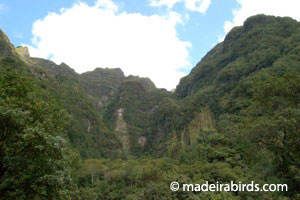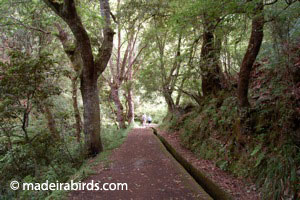Madeira Laurel Forest : Laurissilva
The Laurel forest, a unique subtropical humid forest, dates back to the Tertiary Period, when it occupied vast areas of southern Europe and the Mediterranean basin. Advancing glaciers were the main causes for its almost total extinction, and the only places it persisted was on the so called Fortunate (Macaronesia) Islands, more specifically, in the archipelagos of Madeira, Azores and the Canary Islands.
The Laurel forest is usually characterized by the predominance of trees belonging to the Lauraceae family, such as the Bay Laurel Larus novocanariensis, the Fetid Laurel Ocotea foetens, the Madeira Mahogany Persea indica and the Canary Laurel Apollonias barbujana. Besides these, there are others species which are not laurels but are associated to this forest, such as: the Picconia Picconia excelsea, the Lily-of-the-valley Tree Clethra arborea, the rare Madeira Cheesewood Pittosporum coriaceum or the Madeira Holly Ilex perado. There is also a huge variety of bushes, ferns, mosses, lichens and liverworts. This unique group of flora represent, respectively, about 15% and 9% of the endemic species of Madeira and of Macaronesia region.
In addition it contains a large biodiversity of fauna, thus presenting a large number of endemisms. Here it is common to find a large range of arthropods, butterflies, acarus, terrestrial molluscs (snails and slugs), few reptiles and mammals, some of which are endemic to the Madeira like the Wolf Spider Lycosa blackwalli, the Madeira Wall-lizard Teira dugesii and the Madeira bat Pipistrellus maderensis.
Madeira has the most extensive and well conserved Laurel forest of the world, it occupies around 15 000 hectares of the island, and is totally included in the Madeira Natural Park as an Integral and Partial Nature Reserve.
Due to its scientific importance, and as an attempt to value the region, the Laurel forest has been distinguished as a Special Protection Area by the Wild Birds Directive and as Site of Community Interest of the Habitats Directive. Its worldwide recognition results from these well-known epithets: the Biogenetic Reserve recognised by the European Council in 1992, and the World Natural Heritage decreed by UNESCO in 1999.


Related Tours:
Madeira full-day birdwatching tour
Madeira nature fauna & flora tour
Join Madeira Wildlife Monthly Newsletter. All the updates on your email every month.